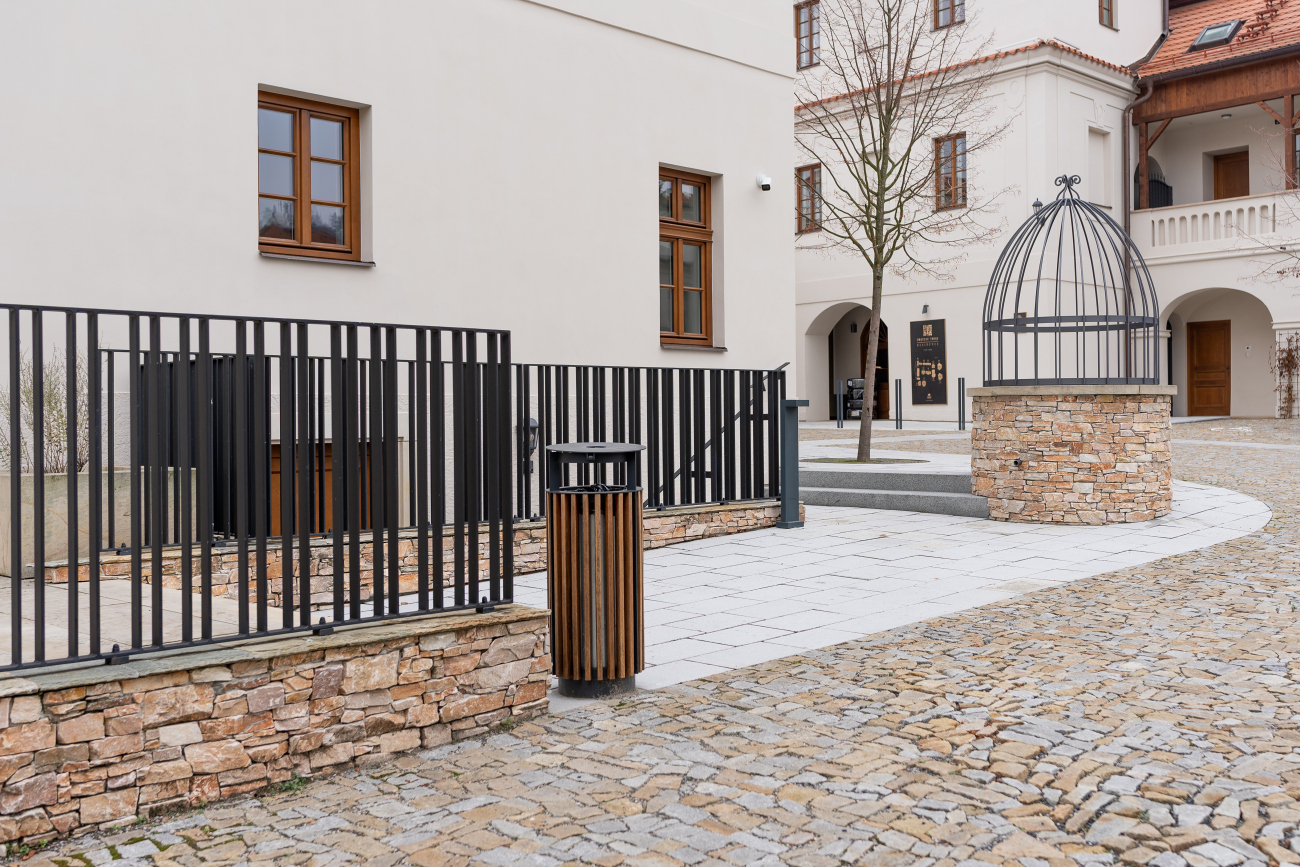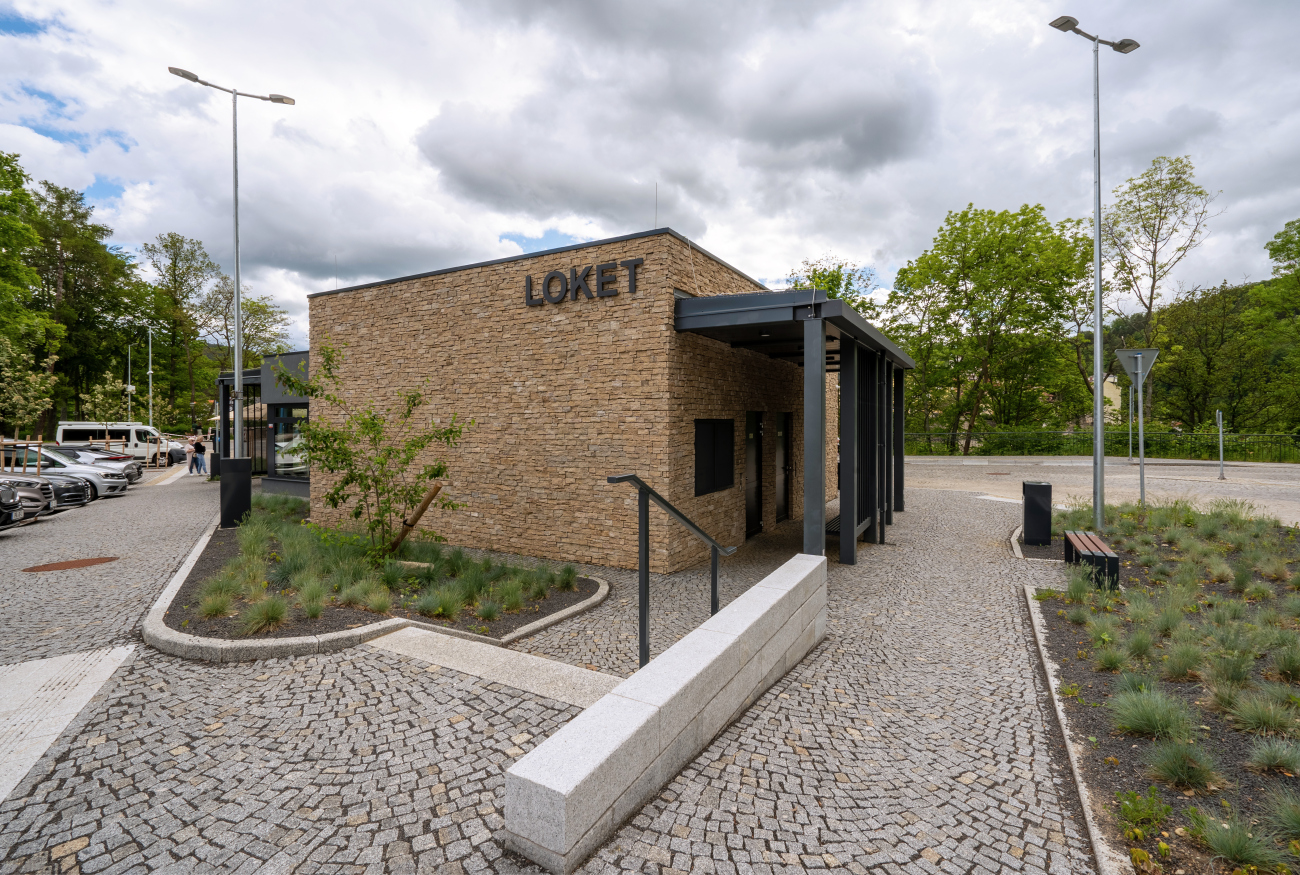
Stone in Public Space
Public Space – the Most Valuable Urban Asset
Public space has been a phenomenon since the very inception of cities, influencing their form and function, the behavior of their inhabitants, and their very identity. The form and organization of urban public space are factors that can either make the same public area lively, attractive, and inviting for recreation and activities, or conversely, unfriendly and dysfunctional.Currently, the function and meaning of public space are undergoing a dynamic transformation. In an age where we can buy almost everything online, where we have successfully moved communication to the virtual realm, and where we fly to the other side of the world for vacations, it may seem that public space is beginning to lose its significance. Yet, the need and demand for quality public space have never been greater than today. And stone has its say in this matter.
 |
Natural stone has appeared in public spaces for thousands of years. This traditional building material quickly gained popularity for its omnipresence, workability, durability, and resilience. These qualities remain, and stone is still sought after for them today. In the current urban environment, however, other, more difficult to articulate factors also play a role. The use of natural stone in public spaces—otherwise known as "concrete jungles"—evokes emotions in city dwellers. Especially in the European context, we suddenly feel a connection to history, to our ancestors. We behave with respect to tradition and heritage value. The nobility and beauty of stone in public spaces awakens a renewed pride in our neighborhood, city, or region.
Stone in the City – Material for Every Situation
Stone in public space can be incredibly versatile. It can be pavement, cladding, or a seating ledge on a retaining wall, steps leading up to a space, or a curb. The most heavily used surfaces, meaning the "urban floor," can be in the form of formatted or irregular tiles or paving stones. Depending on the desired atmosphere and comfort, split stones, edge-cut stones (and thus with minimal joints), or stones cut on all sides can be used. Claddings also offer a wide array of options, from patterned cladding to custom-designed formats. A popular public element inviting to stay are various seating ledges and steps. Here, durable granite elements are a good choice, but lighter porous stones such as sandstone, which do not heat up as much in the sun, are also suitable. |
A separate chapter in the application of stone in public space is surface treatment. While vertical stone constructions can withstand practically any finish, for pavings, coarser finishes with good slip resistance, such as flaming or sandblasting, are generally suitable. In stone pavings, guiding lines and other elements for the visually impaired can also be mechanically incorporated.
Even for the use of natural stone in public spaces, especially for pavings, there are practical limits. Whether using cubes or formatted tiles, the dimensions of the elements and the structural layer must correspond to the expected load. Sidewalks can accommodate thinner/larger formats, while for areas intended for vehicle traffic (which are also pedestrian zones), stones of greater thickness (in relation to the surface, meaning more substantial) must be chosen. The lifespan and durability of stone pavings can be significantly extended by using modern construction chemistry, such as laying them in drainage mortar, which ensures water drainage while providing high load-bearing capacity. Last but not least, especially for formatted pavings, it is necessary to consider surface impregnation to maximize the prevention of pollution, which will inevitably occur in street or pedestrian zone areas sooner or later.
Stone on Stone – A Mosaic of Realizations
One of our projects is the revitalization of urban terraces in Český Dub. In the place of a brownfield site of a dilapidating factory directly within the city heritage zone, tiered relaxation terraces have been created that respond to the sloping terrain. Sandstone formats are used here as wall cladding and for openings, with sandstone appearing in a thicker profile as a finishing ledge. Sandstone on vertical constructions is complemented by gray and black granite in horizontal positions—split granite mosaics, granite stair steps, and curbs. Material-wise, stone is complemented by glass railings and metal elements of railings and historic lamps. The urban terraces grow from the ground through stone, intertwining with perennials and inviting locals and tourists to pause with their atmosphere.

Although building façades may not immediately be associated with public space as such, they, especially ground floor façades, are part of it. They form the walls of this "outdoor living room." Their appearance, material, and connection to paving significantly influence the overall mood of the city. The stone ground floor of office buildings in Prague's Karlín, made from Jurassic limestone with two different surface finishes, enhances the local representative atmosphere. The vertical joint cutting of the stone façade responds to the stripes of two shades of granite cubes.


Public space is possibly the most valuable urban asset. Fortunately, cities are beginning to realize its value and function in today's world, which corresponds to the increasing interest in its form. Natural stone, which has been associated with public space since the very beginning, continuously finds new uses for its qualities, whether on its own, in combination with other building materials, or alongside elements such as vegetation.
The English translation is powered by AI tool. Switch to Czech to view the original text source.
0 comments
add comment










